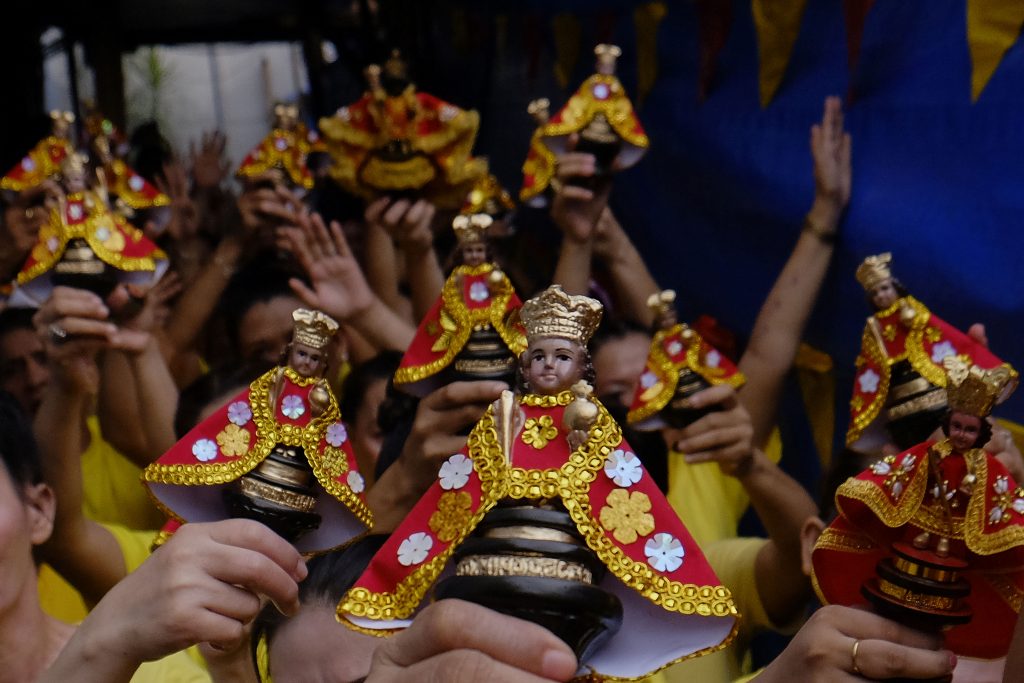Ang “katekismo series” na ito ay para sa lahat, mula bata hanggang sa mga nakakatanda. Ito ay ibinihagi ni Father Christian Buenafe, O.Carm, upang mas maintindihan ng mga Katoliko, pati na rin ng mga ‘di Katoliko, ang ibig sabihin ng pananampalataya, paniniwala, at “everything under the sun.”
Teacher: Hello class. Welcome. How are you?
Student: We are fine, teacher.
Teacher: Did you find time to read the first two chapters of St. Luke’s Gospel? Nalaman nyo na ba paano si Hesus na anak ng Diyos Ama ay naging tao? Paano siya isinilang? Sino-sino ang mga tauhan sa kwento? Paano pinadala ng Diyos si “angel Gabriel” para ibalita kay Maria ang tungkol sa kanyang pagbubuntis. Meron ba kayong mga tanong, class, tungkol sa “birth” at “infancy period” ni Hesus?
Student 1: Teacher, totoo ba ang “angels?”
Teacher: Totoo. Sino ba ang nakipag-usap kay Zechariah at Mary? Di ba si “angel Gabriel.” Totoo ang “angels.” Maraming pagkakataon sa Bibliya na ang mga “angel” ay naging mga sugo. May pangalan pa nga ang iba. Sina Gabriel, Raphael, Michael. At si Hesus mismo sinabi niya mismo sa kanyang mga “disciples” ang patungkol sa mga “angels” lalo na sa mga bata.
Student 2: Teacher, sabi ng tita ko, di daw totoo ang Sto. Niño kasi wala namang Sto. Niño na nakasulat sa Bible. Bakit ang mga Katoliko ay may Sto. Niño? Bakit naging Sto. Niño si Hesus? Eh wala naman sa Biblia ang Sto. Niño?
Teacher: Hay naku, ito na naman tayo. Kasi hindi nakasulat sa Bible. Class, talagang walang Sto. Niño na words sa English Bible dahil “Spanish words” ang Sto. Niño. Santo na ang ibig sabihin ay “holy” at Niño na ang ibig sabihin ay “child.”
Ang Sto. Niño sa English ay “Holy Child or Holy Infant.” Sa Filipino naman ay “Banal na Bata,” at sa Cebuano naman ay “Balaang Bata.”
Class, basahin natin ang text sa English mula sa Ebanghelyo ni San Lukas. “Then Mary said to the angel, ‘How can this be if I am virgin?’ And the angel said to her, ‘The Holy Spirit will come upon you and the power of the Most High will overshadow you; therefore, the ‘holy child’ to be born shall be called Son of God.’” (Luke 1: 340-35.0
O Class, ano na? Nasa Bible ang “Holy Child” o Sto. Niño? Ang Sto. Niño ay si Hesus mismo, “the child Jesus.”
Student 2: Ay, akala ko wala yan sa Bible?
Teacher: Yan ang akala mo, yan kasi, akala kasi. Class, wag mag-“presume” o mag-“assume.” Magtanong para matuto, di lang mag-akala ko kasi. Pero, class, minsan din wala talaga ang “exact word” sa Bible kung hahanapin mo, pero malalaman mo ito sa “description” ng “narrative” o pag-kwento.

Student 3: Eh bakit ang Sto. Niño di ba bata pa si Hesus? Bakit may korona na? May “wardrobe” pa na maganda? May hawak hawak pa na “globe” (world) at may “scepter pa. Eh, wala naman yan sa Bible?
Teacher: Class, ang mga nakikita ninyong Sto. Niño na may korona, “royal dress,” may hawak na “globe” at “scepter,” ito ay example ng “creative artistic interpretation” ng “interpreter” ng “text.” Ginawa ito ng mga “visual artists” — mga painter at sculptor. Hango ito sa “description” ng “annunciation narrative” sa “first chapter” ng Gospel ni St. Luke.
Basahin natin ang text: “But the angel said, ‘Do not fear, Mary, for God has looked kindly on you. You shall conceive and bear a son and you shall call him Jesus. He will be great and shall rightly be called Son of the Most High. The Lord God will give him the kingdom of David, his ancestor; he will rule over the people of Jacob forever and his reign shall have no end.'” (Luke 1: 30-33.)
Basahin mo ang “description” kay Hesus, “he will be great, Son of the Most High, he has the kingdom of David, he will rule over the people of Jacob, his reign will not end.”
Kaya hango dito, si Hesus ang anak ng Diyos ay isang “great ruler,” kaya ang mga nag-“interpret” at nag-“visualize” ng “descriptions” nito na si Hesus ay isang hari sa buong mundo nilagyan ng korona, may hawak na “globe” at “scepter,” “ruler” at “king” kahit bata pa siya.
Yan ang “representation” ng Batang Hesus sa image ng Sto. Niño. “Representation” lang ito, class, kung paano na-“describe” ang batang Hesus sa “account” ni St. Luke.
Student 4: Ay, di pala ito gawa-gawa lang, meron palang bases.
Teacher: Merong “bases” sa “Christian Art History,” class. Marami pa kayong makikitang “artworks” na hango sa “texts” o “historical events” at ma-“amaze” kayo paano ang “interpretation” ng “artists in a specific period of time of our history.”
Remember, class, and Catholic Church ay matanda na, mga 2,000 years old na siya. Ang Catholic Church ang nag-“compile” ng “writings” at “texts” na kung anong meron tayo ngayon, ang Bible. Kaya lahat ng mga bagong “editions” ng Bible ay galing yan sa mga “original translations” na ginawa ng Catholic Church magmula sa “old scrolls and writings written in Hebrew and ancient Greek.”
Si St. Jerome, mga “Christian hermits” at “monks” ay malaki ang naiambag sa pagbubuo ng Bible. “In the past century,” meron pang mga na-” discover” na mga “scrolls” sa “deserts” ng Holy Land at ito ay patuloy na pinag-aaralan.
Student 5: Teacher, sige po, sabihan ko po ang tita ko na mali siya. May Sto. Niño pala sa Bible.
Teacher: OK, class, kitakits bukas. Diretso na kayo sa “community pantry” ng BEC natin. Doon may pa meryenda si Aling Mameng, ang ating katekista. Mag-“physical distancing” kayo ha. Bye, class.
Students: Bye teacher. Viva Pit Senyor! Viva Senyor Sto. Nino!
Teacher: Ha? Agad-agad? Viva Pit Senyor!









